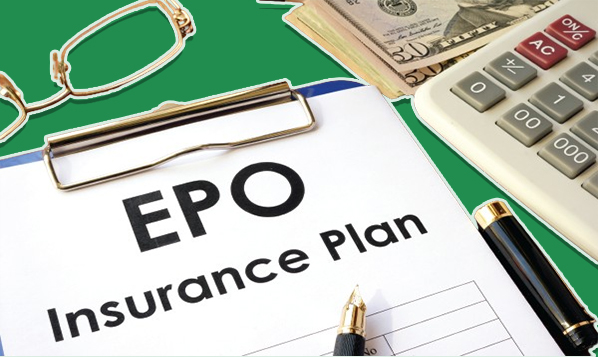You may have encountered EPO plans while looking for health insurance. Whatever your medical history and general health, having a comprehensive health insurance plan is beneficial. Health insurance helps cover emergency procedures, hospital stays, prescription drugs, and other types of care that can be costly to pay for out of pocket.

However, selecting the best health insurance plan for your requirements is frequently more difficult than it seems. Numerous health insurance plans are available, one of which is the Exclusive Provider Organization (EPO) plan.
What is EPO Health Insurance
An EPO plan is a popular type of health insurance that requires coverage from a specific network of providers. This health insurance only covers out-of-network care in extreme cases or emergencies, such as complex treatment or when the network lacks the required provider.
Compared to other kinds of health plans, it will probably have a higher deductible and lower monthly payments. For those who are comfortable staying in the EPO network and prefer the freedom to select their providers without referrals, EPO health insurance might be a good fit. Furthermore, EPO means exclusive provider organization.
How Does EPO Health Insurance Work
You can receive medical care from providers and facilities that have a contract with the health insurance company if you have an EPO health plan. These medical professionals and facilities are referred to as “in-network.” For medical services and treatments, the insurance company consents to pay these physicians a specific sum.
The majority of the cost of in-network care is covered by the health insurance provider. Depending on the plan, the remaining amount is paid in copayments, coinsurance, and a deductible. After paying your deductible, you must also pay a predetermined amount known as a copayment for prescription drugs and doctor visits.
The fact that you can see specialists without a referral is one advantage of EPO insurance. For the insurer to pay for the visit, you must select a specialist who is part of the EPO’s network. EPO health insurance may require pre-authorization before it covers specific medical procedures and treatments, which is a crucial aspect to be aware of.
How Much Does EPO Health Insurance
The monthly premiums are the largest expense related to an EPO plan. The specific plan you select and your location can affect your EPO premiums. For instance, the premium amount of an EPO plan through the Health Insurance Marketplace may be affected by the metallic tiers of coverage. The monthly premiums for a gold-level EPO plan will be higher than those for a bronze plan.
Additionally, there are catastrophic EPO plans that qualify for health savings accounts (HSAs) and have lower premiums than other kinds. Moreover, a 30-year-old’s average monthly EPO premium on the federal Health Insurance Marketplace is $466.
Advantages of EPO Health Insurance
Some advantages of EPO plans are similar to those of PPO and HMO plans, such as cost savings and flexibility. An EPO plan has the following benefits:
- Network-based coverage: A network of healthcare providers is the foundation of EPO plans.
- No out-of-network coverage: Except in emergencies, EPOs do not cover care received outside of their network.
- No PCP needed: EPOs don’t need referrals or a primary care physician.
- Predictable expenses: frequently have reduced copayments, deductibles, and premiums. Also, direct access to experts within the network is provided by this feature.
- Balanced choice: By requiring in-network care and permitting you to see specialists without a referral, an EPO gives you more control at a lower cost than a PPO while combining the structure of an HMO with some flexibility of a PPO.
Copays, Deductibles, and Coinsurance
An EPO has other out-of-pocket expenses besides premiums. You might have to pay copays, a deductible, and coinsurance, depending on your particular plan:
Copays
A copay, also known as a copayment, is the fixed sum that you must pay under your health insurance policy for a particular service or good. Insurers impose copays for prescription drugs and doctor visits, apart from preventative care.
Deductible
The amount that a policyholder must pay out of pocket before the EPO plan starts to split the costs is known as the deductible.
Coinsurance
The percentage of certain covered services that you are required to pay is known as the coinsurance rate. The remaining percentage is covered by your health insurance.
Every EPO plan will also have an out-of-pocket maximum, which is the highest amount a member can spend during a plan year on covered services. Since an EPO will not pay for care from out-of-network providers, members must seek care from in-network providers. To make an informed choice, you should carefully consider the out-of-pocket maximums, copays, deductibles, coverage limitations, and premiums.
Who Should Get EPO Health Insurance
An EPO health insurance plan may be a suitable option for individuals who prefer self-care without primary care physician assistance and avoid referral headaches. This option is suitable for those seeking flexibility without the high premiums of a PPO plan. Keep in mind that out-of-network care is not covered by an EPO plan.
Additionally, an EPO plan might not be the best option for your family’s health insurance needs if you want the flexibility to select any physician or hospital you like, or if you currently work with providers that are not part of the EPO’s network.

